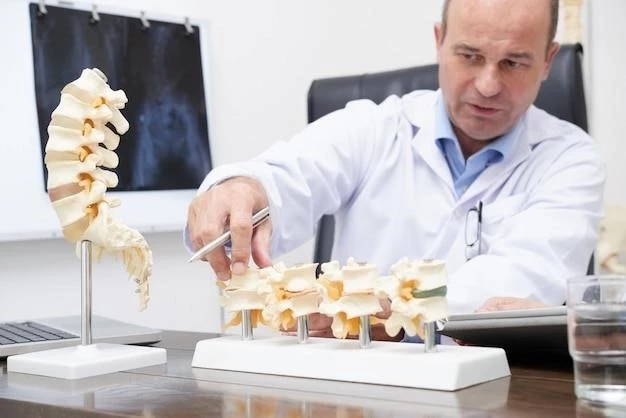Article Plan⁚ Disease ⎼ Osteitis Deformans
Introduction to Osteitis Deformans (Paget’s Disease of Bone)
Osteitis deformans‚ commonly known as Paget’s disease of bone‚ is a chronic bone disorder characterized by abnormal bone remodeling. First described by Sir James Paget in 1876‚ this condition involves dysregulated bone resorption and formation leading to the development of enlarged‚ weaker‚ and at times deformed bone structures. While often asymptomatic‚ Paget’s disease can manifest with pain‚ deformities‚ and an increased risk of fractures.
With a high prevalence in individuals over 50‚ Paget’s disease alters the normal bone turnover process‚ resulting in bones that are softer‚ larger‚ and prone to deformities. It commonly affects the pelvis‚ femur‚ and vertebrae‚ although any bone can be impacted. The disease progression involves distinct phases of bone resorption‚ ineffective mineralization‚ and abnormal bone deposition‚ leading to structural changes in affected bones.
Diagnosis of Paget’s disease is primarily based on radiographic imaging‚ with biochemical markers like alkaline phosphatase aiding in confirming the condition. Treatment typically includes bisphosphonates to reduce bone resorption and promote bone health. Close monitoring and management are essential to prevent complications such as fractures‚ osteoarthritis‚ and in rare cases‚ the development of bone tumors.
Clinical Presentation and Symptoms
The clinical presentation of Paget’s disease of bone‚ also known as osteitis deformans‚ can vary depending on the affected bones and the stage of the disease. Common symptoms include bone pain‚ deformities‚ and fractures. Pain in the affected bone(s) is a typical early symptom‚ and it may worsen with activities or at night.
When the pelvis is involved‚ patients may experience hip pain‚ while skull involvement can lead to headaches and hearing loss. Compression of nerves due to bone growth can cause neurological symptoms like tingling‚ numbness‚ or weakness in the extremities. In some cases‚ Paget’s disease can result in bone deformities such as bowed limbs‚ kyphosis‚ or dental abnormalities.
As Paget’s disease progresses‚ individuals may develop arthritis in the affected joints‚ leading to stiffness and reduced range of motion. Rarely‚ Paget’s disease can progress to Paget’s sarcoma‚ a type of bone cancer‚ causing severe‚ unrelenting pain in the affected area.

Early diagnosis and appropriate management are crucial in preventing complications associated with Paget’s disease. Treatment typically involves medications like bisphosphonates to regulate bone remodeling and reduce bone resorption. Regular monitoring and follow-up with healthcare providers can help in managing symptoms and preventing further bone deterioration.
Diagnosis of Paget’s Disease of Bone
Diagnosis of Paget’s disease‚ also known as osteitis deformans‚ primarily relies on radiographic imaging to identify characteristic bone changes indicative of the disease; Radiographs can reveal localized bone enlargement‚ changes in bone density‚ and deformities commonly seen in affected bones. These imaging studies play a crucial role in confirming Paget’s disease and monitoring disease progression;
In addition to imaging‚ biochemical markers like serum alkaline phosphatase and urinary pyridinoline levels can aid in diagnosing Paget’s disease and assessing disease activity. Elevated levels of alkaline phosphatase are commonly observed in individuals with Paget’s disease‚ reflecting increased bone turnover and remodeling. These markers help healthcare providers evaluate the extent and severity of the condition.
While many patients with Paget’s disease are asymptomatic‚ those with a suspected family history of the disease or presenting with relevant symptoms should undergo diagnostic screening. Bone scans may be recommended to assess the activity and distribution of Paget’s disease in the skeleton‚ supplementing radiographic findings. Overall‚ a comprehensive approach that includes clinical evaluation‚ imaging studies‚ and biochemical tests is essential for an accurate diagnosis of Paget’s disease.
In cases where diagnostic imaging and biochemical markers are inconclusive‚ a bone biopsy of the affected area may be considered to confirm the presence of Paget’s disease. However‚ this invasive procedure is typically reserved for instances where other diagnostic measures do not provide definitive results.
Early and accurate diagnosis of Paget’s disease is crucial for initiating timely management strategies to prevent complications and optimize patient outcomes. Close collaboration between healthcare providers‚ radiologists‚ and laboratory specialists is key to ensuring a comprehensive diagnostic evaluation and effective management of Paget’s disease.
Etiology and Pathophysiology
Paget’s disease of bone‚ known as osteitis deformans‚ is a chronic condition characterized by abnormal bone remodeling processes. The disease involves dysregulated bone metabolism with excessive bone resorption followed by disorganized new bone formation‚ leading to structural changes in affected bones. While the exact cause of Paget’s disease remains unknown‚ both viral and genetic factors are thought to play a role.
Several studies have suggested a potential viral etiology for Paget’s disease‚ with viral antigens‚ including measles virus‚ detected in affected osteoclasts. Additionally‚ a positive family history is reported in a significant percentage of patients‚ indicating a possible hereditary component. Research has focused on a pagetic susceptibility locus on chromosome 18q‚ suggesting a genetic predisposition to the condition.
The pathological process of Paget’s disease occurs in distinct stages‚ beginning with intense osteoclastic activity and accelerated bone resorption‚ leading to a high bone turnover rate. This phase is followed by an osteolytic-osteoblastic stage where new bone formation is abundant but not effectively mineralized. In the final phase‚ dense but weakened bone deposition occurs‚ resulting in structurally abnormal bone.
Paget’s disease primarily involves the axial skeleton but can affect any bone in the body. While many patients with Paget’s disease may remain asymptomatic‚ those with symptoms often experience bone pain that worsens with rest‚ weight-bearing‚ or at night. Other manifestations may include deformities‚ arthritis in nearby joints‚ and in severe cases‚ complications such as compression of nerves and hearing loss due to bone growth.
The diagnosis of Paget’s disease is typically made through radiographic imaging‚ with biochemical markers like alkaline phosphatase aiding in assessing disease activity. Treatment focuses on managing symptoms and reducing disease progression‚ often involving bisphosphonates to regulate bone resorption and promote bone health. Regular monitoring and follow-up are essential in managing Paget’s disease effectively and preventing complications associated with the condition.
Complications Associated with Paget’s Disease
Complications can arise from Paget’s disease of bone‚ also known as osteitis deformans‚ due to the abnormal bone remodeling processes and structural changes in affected bones. One of the primary complications is an increased risk of fractures‚ as the weakened and deformed bones are more prone to breakage‚ particularly in weight-bearing bones like the hip or spine.
Advanced Paget’s disease can lead to deformities in the bones‚ such as bowing of the long bones or kyphosis in the spine. These deformities not only impact mobility but can also contribute to chronic pain and functional limitations. Compression of nerves due to bone growth can result in neurological symptoms like tingling‚ numbness‚ and muscle weakness‚ affecting the quality of life.
In some cases‚ Paget’s disease can progress to complications such as osteoarthritis in nearby joints‚ leading to stiffness‚ pain‚ and decreased range of motion. Rarely‚ there is a risk of developing bone tumors‚ including Paget’s sarcoma‚ a type of bone cancer associated with severe and unrelenting pain in the affected area.
Pagetic bones are also at increased risk of metabolic abnormalities like hypercalcemia‚ hypercalciuria‚ and hyperuricemia‚ which require monitoring and management to prevent further complications; Cardiovascular involvement‚ though uncommon‚ can occur in cases of widespread Paget’s disease‚ leading to conditions like high-output cardiac failure due to hypervascularization of the bone marrow.
Regular monitoring by healthcare professionals and early intervention to manage symptoms and slow disease progression are essential in reducing the risk of complications associated with Paget’s disease. Treatment with bisphosphonates‚ which regulate bone remodeling‚ can help in stabilizing the disease and minimizing the likelihood of developing severe complications.
Treatment Options for Paget’s Disease
When it comes to Paget’s disease of bone‚ also known as osteitis deformans‚ treatment aims to manage symptoms‚ slow disease progression‚ and prevent complications associated with abnormal bone remodeling. The mainstay of treatment for Paget’s disease is the use of bisphosphonates‚ a class of medications that help regulate bone resorption and promote more controlled bone turnover.
Bisphosphonates are commonly prescribed to patients with Paget’s disease to inhibit osteoclast activity‚ reducing the excessive bone resorption observed in the condition. These medications are typically administered either intravenously or orally‚ with the choice of administration route depending on the patient’s specific needs and tolerability. While oral bisphosphonates are generally well-tolerated‚ intravenous bisphosphonates may be recommended for individuals who require more rapid and potent treatment.
In addition to bisphosphonates‚ other treatment options for Paget’s disease may include analgesics to manage bone pain and nonsteroidal anti-inflammatory drugs (NSAIDs) to alleviate inflammation and discomfort. Surgical interventions like joint replacement or corrective procedures may be considered in cases where Paget’s disease has led to severe joint deformities or significant bone damage.
Regular monitoring of symptoms‚ disease activity‚ and treatment response is essential in the management of Paget’s disease. Follow-up appointments with healthcare providers allow for adjustments in treatment plans as needed and help ensure that the disease remains controlled. Maintaining a collaborative relationship with healthcare professionals is key to effectively managing Paget’s disease and optimizing quality of life.
Prognosis and Management Strategies
Paget’s disease of bone‚ also known as osteitis deformans‚ exhibits a variable prognosis depending on disease severity‚ early detection‚ and treatment adherence. While many individuals with Paget’s disease may remain asymptomatic‚ complications can arise if the condition progresses unchecked. Understanding the prognosis and implementing effective management strategies are essential in optimizing outcomes for patients with Paget’s disease.
Early diagnosis and initiation of appropriate treatment play a significant role in managing Paget’s disease and preventing complications. Regular monitoring of disease activity‚ bone turnover markers‚ and imaging studies can help healthcare providers assess treatment response and adjust therapeutic strategies accordingly. Compliance with prescribed medications‚ lifestyle modifications‚ and follow-up appointments is crucial for long-term disease management.
Bisphosphonates are commonly used in the treatment of Paget’s disease to regulate bone remodeling and stabilize disease progression. These medications can effectively reduce bone resorption and alleviate symptoms associated with abnormal bone turnover. Additionally‚ analgesics and anti-inflammatory drugs may be prescribed to manage pain and inflammation related to Paget’s disease.
Management strategies for Paget’s disease extend beyond pharmacological interventions and may include physical therapy‚ supportive devices‚ and surgical interventions in cases of severe complications or deformities. Consultation with a multidisciplinary healthcare team‚ including orthopedic specialists and rheumatologists‚ can provide comprehensive care and tailored treatment plans based on the individual’s needs.
Overall‚ proactive management‚ regular monitoring‚ adherence to treatment regimens‚ and a collaborative approach between patients and healthcare providers are key in navigating the challenges posed by Paget’s disease. By implementing effective management strategies and adopting a holistic approach to care‚ individuals with Paget’s disease can better manage symptoms‚ reduce complications‚ and maintain an improved quality of life.
Prevention and Lifestyle Recommendations
While there are no specific preventive measures to avoid developing Paget’s disease of bone‚ adopting certain lifestyle habits can help manage symptoms and improve overall bone health. Regular weight-bearing exercise‚ such as walking‚ can help maintain bone strength and reduce the risk of fractures associated with Paget’s disease.
A balanced diet rich in calcium and vitamin D is essential for supporting bone health and minimizing bone loss. Including dairy products‚ leafy greens‚ nuts‚ and fortified foods in your diet can provide the necessary nutrients to support bone remodeling processes. Consultation with a dietitian or healthcare provider can help develop a personalized nutrition plan tailored to your needs.
Quitting smoking and limiting alcohol consumption are advisable for individuals with Paget’s disease‚ as smoking and excessive alcohol intake can negatively impact bone health and exacerbate bone-related conditions. Smoking cessation programs and alcohol moderation strategies can be beneficial in improving overall health outcomes.
Regular monitoring of bone health through bone density scans and biochemical markers can aid in early detection of bone abnormalities and facilitate prompt intervention if needed. Discussing any concerns or changes in symptoms with your healthcare provider is crucial for effective disease management and prevention of complications associated with Paget’s disease.
Engaging in fall prevention strategies can also be beneficial for individuals with Paget’s disease to reduce the risk of fractures. Ensuring a safe environment‚ wearing appropriate footwear‚ and using assistive devices when needed can help minimize the likelihood of falls and injuries that may impact bone health.
Overall‚ maintaining an active lifestyle‚ following a nutritious diet‚ avoiding harmful habits‚ and staying proactive in healthcare management can contribute to better outcomes and quality of life for individuals living with Paget’s disease. By incorporating these preventive measures and lifestyle recommendations‚ individuals can take proactive steps towards managing their condition and promoting bone health.

Research and Future Directions in Treating Osteitis Deformans
Paget’s disease of bone‚ also known as osteitis deformans‚ has been the subject of extensive research to further understand its etiology‚ pathophysiology‚ and optimal treatment strategies. Recent studies have focused on identifying genetic and environmental factors that contribute to the dysregulated bone remodeling seen in Paget’s disease‚ paving the way for targeted interventions and personalized medicine approaches.
Researchers have made significant advancements in delineating the cellular and molecular mechanisms underlying Paget’s disease‚ including the role of osteoclast and osteoblast activity in bone turnover. Novel therapeutic targets aimed at modulating these cellular processes are being explored to develop more effective treatments that can halt disease progression and promote bone health.
Future directions in treating osteitis deformans encompass the development of innovative pharmacological agents‚ such as targeted therapies that aim to normalize bone remodeling and prevent complications associated with Paget’s disease. Clinical trials evaluating the efficacy and safety of these novel treatments are underway‚ offering hope for improved management strategies for individuals with Paget’s disease.
Moreover‚ research efforts are focused on the early detection of Paget’s disease through advanced imaging techniques and biomarker identification. The integration of genetic testing and biomolecular profiling may enable healthcare providers to identify individuals at high risk of developing Paget’s disease and tailor preventive measures accordingly.
Collaborative research endeavors involving basic science investigations‚ clinical trials‚ and translational studies are essential in advancing the field of Paget’s disease management. By fostering interdisciplinary collaborations and harnessing technological advancements‚ the future of treating osteitis deformans holds promise for more targeted‚ personalized‚ and effective therapies that can improve patient outcomes and quality of life.
